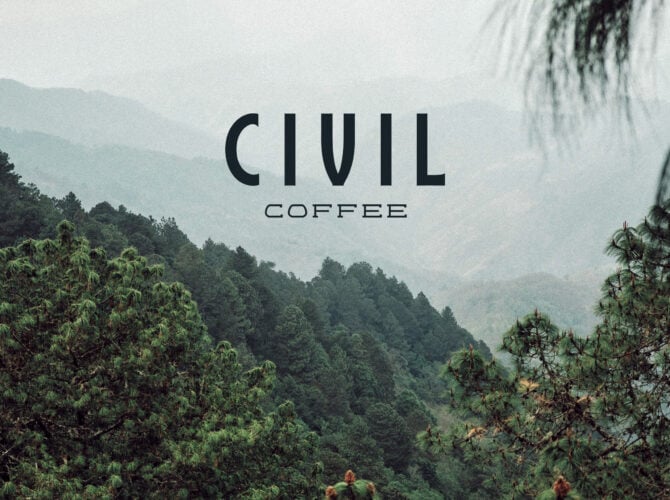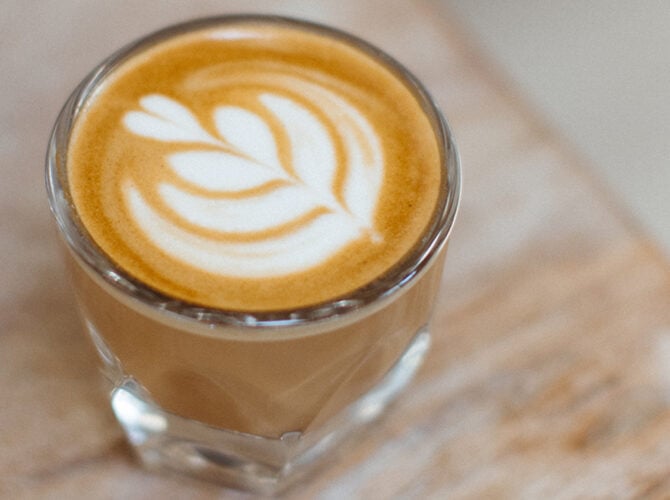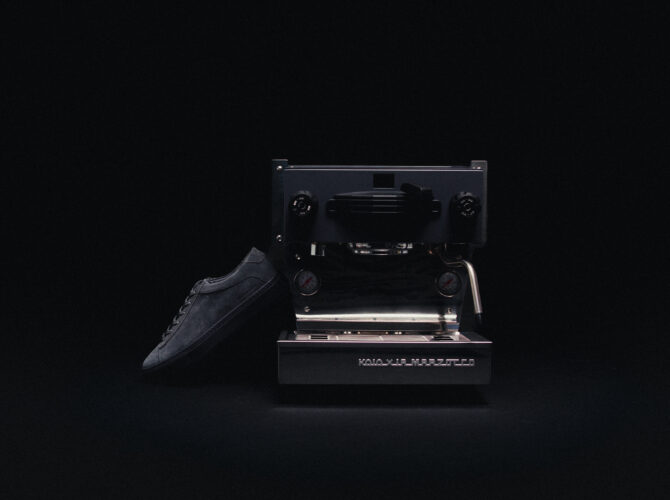What is Espresso?
A quick primer on the traditional Italian beverage
—
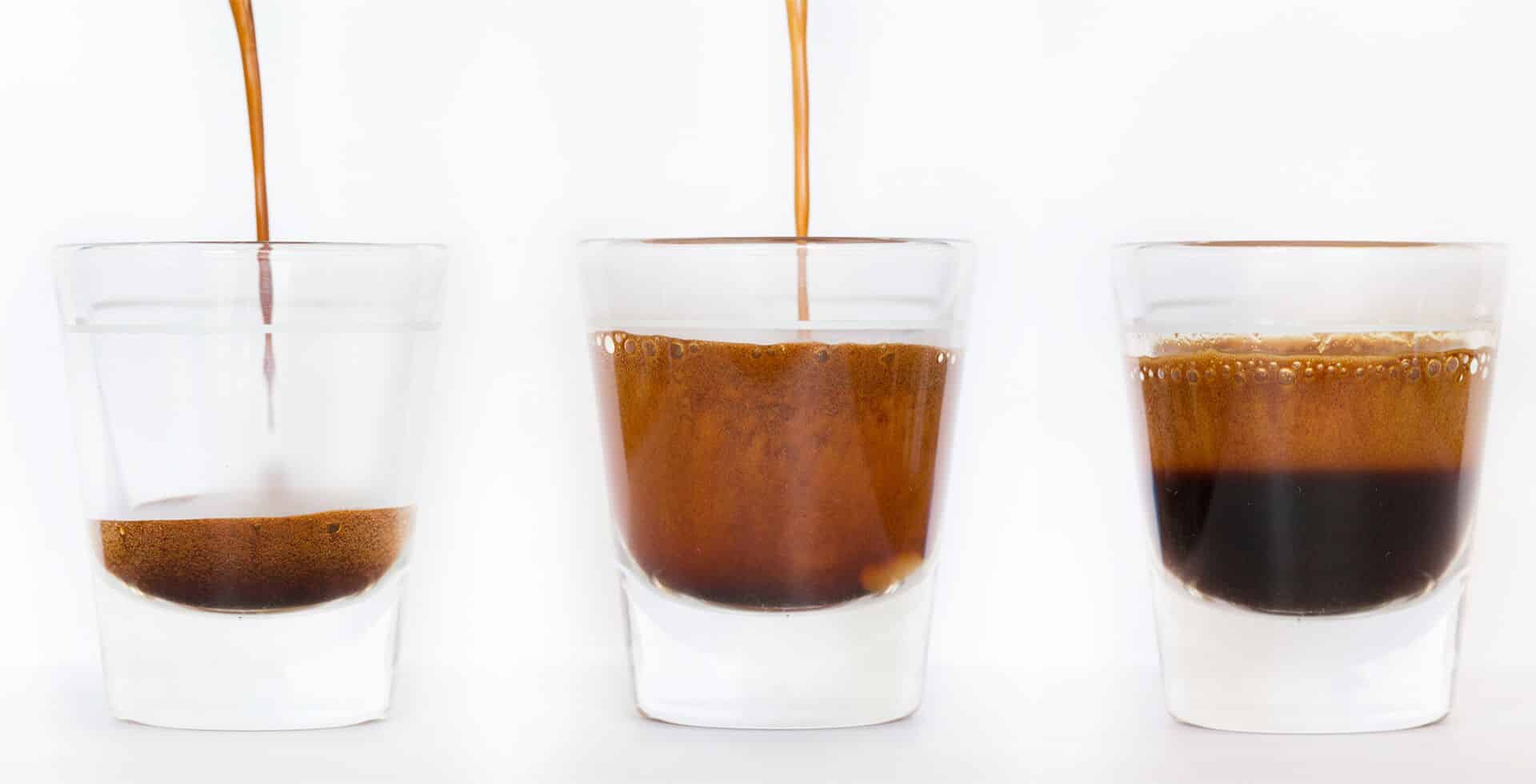
In 2015, we teamed up with ChefSteps for a free home barista class series on anything and everything Espresso. ChefSteps is a high-tech cooking company located right near us, in Pike Place Market, whose work in culinary education we’ve always respected. Together with ChefSteps and LA-based barista Charles Babinski (co-owner of G&B Coffee & Go Get Em Tiger), we created a first-of-its-kind, comprehensive class on all things espresso. We can’t recommend enough that you take the full course on ChefSteps, especially if you’re looking to grow and expand your home espresso knowledge. Nothing like it exists on the internet, or anywhere else. To whet your appetite, we’ll be sharing select snippets from the course. Enjoy!
—
—
What is espresso?
First and foremost, Espresso is a coffee brewing method. It’s a way of making coffee where a small amount of near boiling water is forced through finely ground coffee, under pressure.
In preparation for brewing, coffee is finely ground into a portafilter basket, tamped down into a flat “puck,” and secured into the espresso machine. Once the machine is engaged, it delivers water at an extremely stable temperature using a mechanical pump. The space above the flat espresso puck fills with water and the espresso machine applies 9 bars of pressure to force water through the coffee.
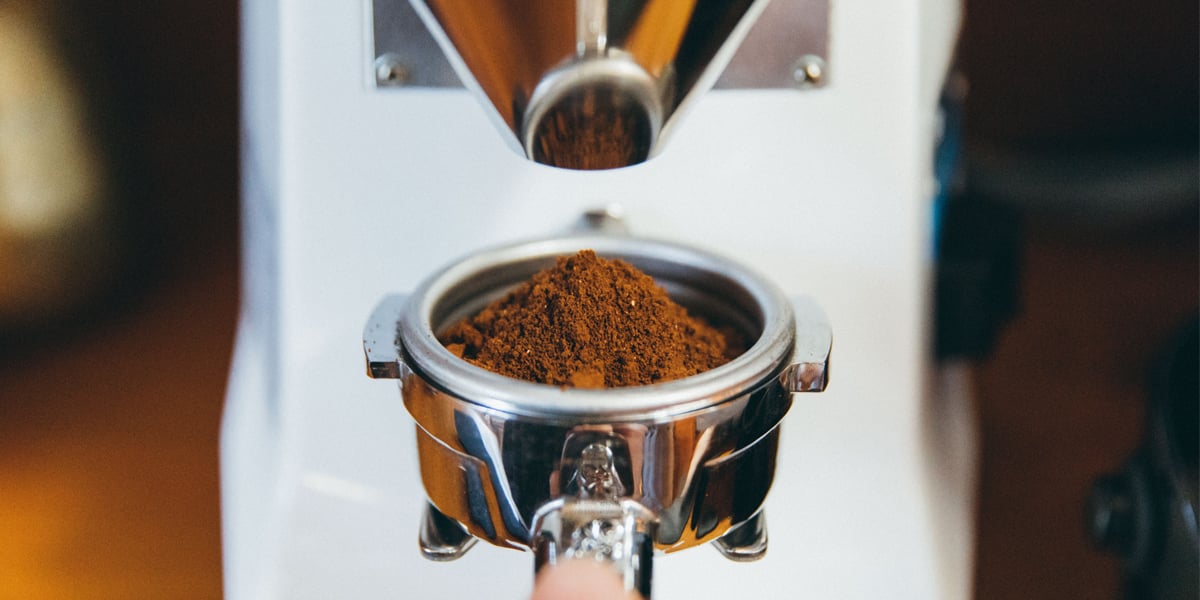
The resulting beverage? Espresso.
The liquid espresso that actually ends up inside of the cup is made up of soluble solids, soluble gases, and insoluble solids.
Soluble solids are what make up the taste and brew strength in espresso.
Soluble gases make up the actual aroma of the espresso.
Insoluble solids contain fragments of the coffee cell walls and other coffee oils that are held in either a suspension or an emulsion. These contribute to the body & mouthfeel of a shot.
As water moves through the coffee grounds to extract, the coffee cell walls are held in suspension, and tag along with the extracted coffee as it falls into the cup. The coffee oils are held in an emulsion surrounded by liquid, rendering them insoluble. These insoluble solids contribute to the aroma, body and taste while also serving as a barrier to perceived bitterness by coating the tongue. While these insoluble gases and oils seem pesky and uncooperative, they’re actually a pretty large part of why we enjoy espresso so much.
After brewing, you’ll notice there are two layers to a shot of espresso—crema (light brown, on the top) and liquid (dark brown, on the bottom).
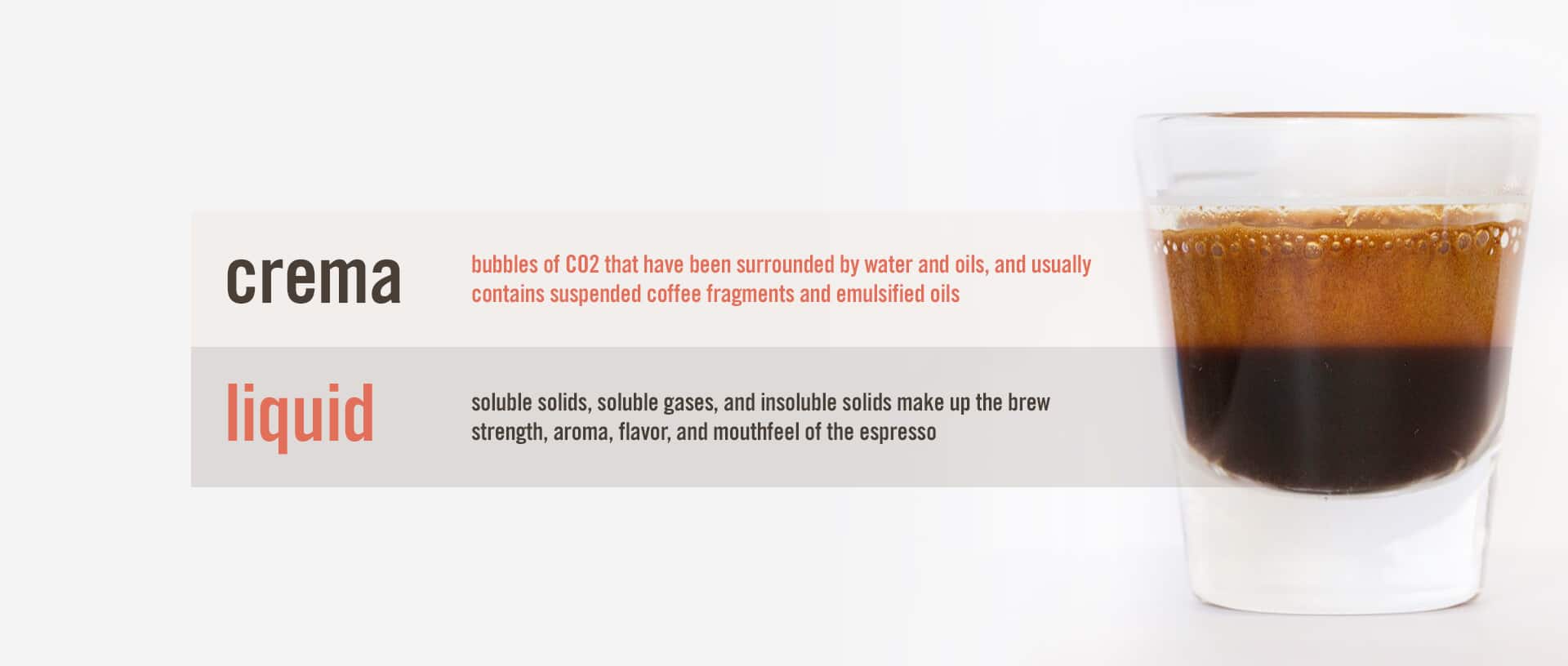
The crema layer is made up of bubbles of CO2 that have been surrounded by water and oils, and usually contains suspended coffee fragments and emulsified oils. This layer can be bitter, and we like to give our espresso a quick stir stir before drinking in order to combine the different layers.
The major part of the espresso is the liquid phase that is made up of the soluble solids and gases and insoluble solids. This is everything the coffee has to offer, extracted by water and placed in your cup. The goal of extracting coffee is that everything good and naturally unique to the coffees you’re brewing should end up in the cup. The tasting notes your roaster places on the bag? Those are in there. The natural sugars and acids the coffee seed absorbs and develops from the growing process? Those are in there. The processing method? Yep, that too. Finding the perfect balance of variables to extract the proper amount is one of the main reasons we love espresso so much—it’s a constant journey, and one that we’ll discuss more and more as we move throughout this blog series.
All of the components above are extracted by the actual percolation of hot water through tightly packed and finely ground coffee. The pressurized water extracts (read: moves through and pulls out) the soluble and insoluble solids and oils and deposits them in the cup. The pressure applied by the machine, the amount of coffee used and the fineness of the grind determine the flow rate of the espresso. The more you learn about espresso, the more you’ll start to realize that it’s the job of the barista to tune these elements to create the best tasting beverage. Controlling variables is the name of the game.
—
Enroll in the full Espresso Course on Chefsteps for free.
